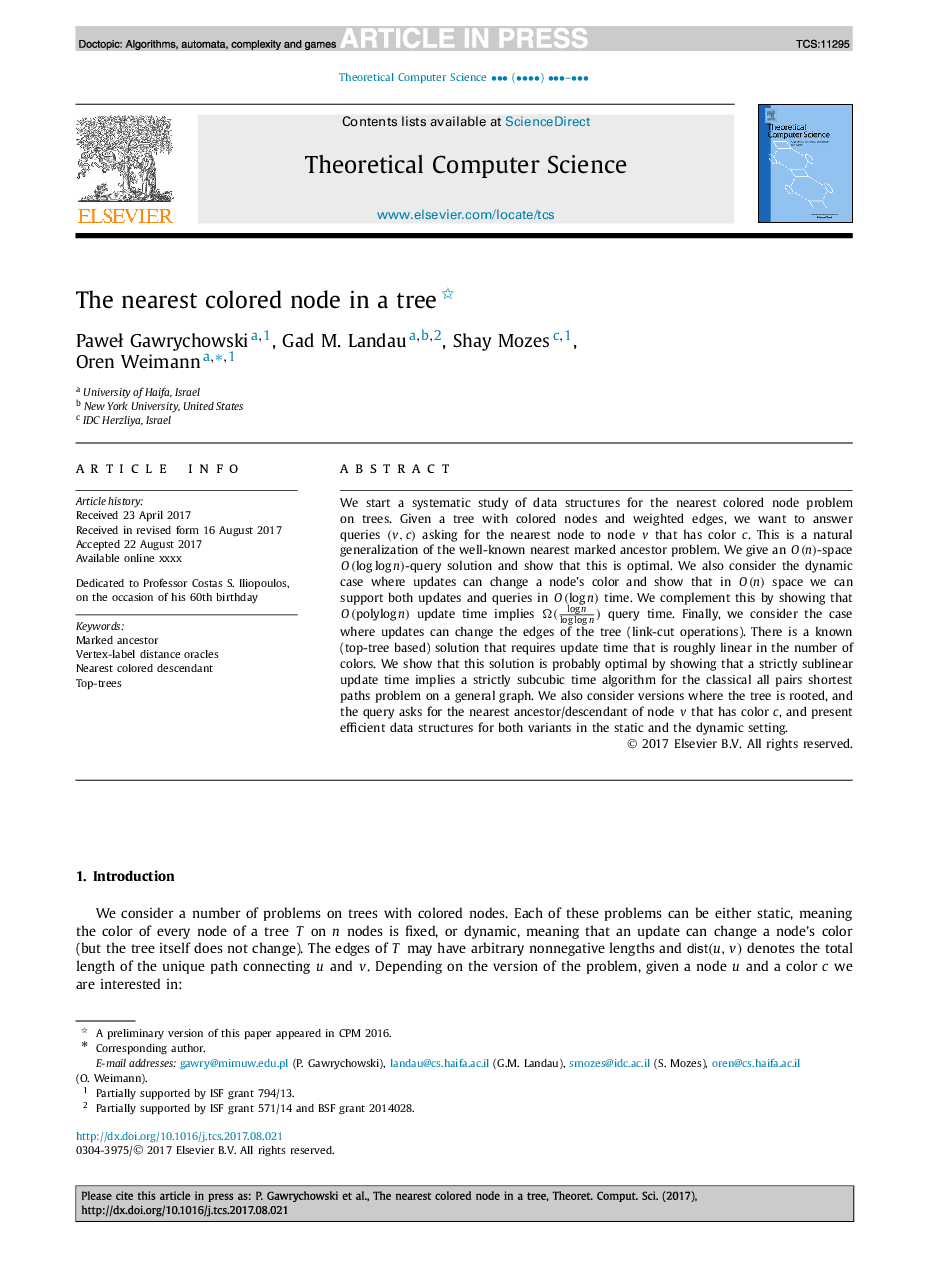| Article ID | Journal | Published Year | Pages | File Type |
|---|---|---|---|---|
| 6875670 | Theoretical Computer Science | 2018 | 8 Pages |
Abstract
We start a systematic study of data structures for the nearest colored node problem on trees. Given a tree with colored nodes and weighted edges, we want to answer queries (v,c) asking for the nearest node to node v that has color c. This is a natural generalization of the well-known nearest marked ancestor problem. We give an O(n)-space O(logâ¡logâ¡n)-query solution and show that this is optimal. We also consider the dynamic case where updates can change a node's color and show that in O(n) space we can support both updates and queries in O(logâ¡n) time. We complement this by showing that O(polylogn) update time implies Ω(logâ¡nlogâ¡logâ¡n) query time. Finally, we consider the case where updates can change the edges of the tree (link-cut operations). There is a known (top-tree based) solution that requires update time that is roughly linear in the number of colors. We show that this solution is probably optimal by showing that a strictly sublinear update time implies a strictly subcubic time algorithm for the classical all pairs shortest paths problem on a general graph. We also consider versions where the tree is rooted, and the query asks for the nearest ancestor/descendant of node v that has color c, and present efficient data structures for both variants in the static and the dynamic setting.
Related Topics
Physical Sciences and Engineering
Computer Science
Computational Theory and Mathematics
Authors
PaweÅ Gawrychowski, Gad M. Landau, Shay Mozes, Oren Weimann,
